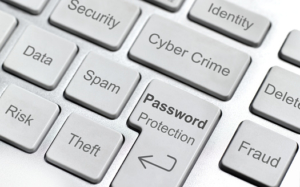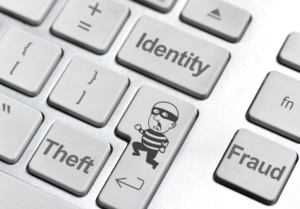Tips to Protect Your Identity from Cyber Thieves
There are several tried and true ways that you can use to protect yourself from ID theft, and some of them you might have never even considered:
 Check Your Passwords – Every online account you have should have a different password. Never use the same password for more than one account. You can easily fix this issue by using a password manager. Also, don’t use specific words/phrases or keyboard sequences when creating passwords. A password manager can even generate passwords for you.
Check Your Passwords – Every online account you have should have a different password. Never use the same password for more than one account. You can easily fix this issue by using a password manager. Also, don’t use specific words/phrases or keyboard sequences when creating passwords. A password manager can even generate passwords for you.
Don’t Post Personal Information on Social Media – This including things like your kid’s school or teacher, the town your parents live in, your pet’s name, or even where and when you are going on vacation. Cyber thieves can use this information to guess passwords.
Ignore Any Email from People You Don’t Know – If you get emails from people you don’t know that have a link or attachment, never, ever click or open them.
Put a Password on Your Phone – This way, if your phone is lost or stolen, you don’t have to worry.
Shred Important Documents – Anything that comes in that has personal information, that would go in the rubbish, should be shredded. This includes credit cards bills and medical records.
Never Give Your Social Security Number Out – Unless you absolutely have to, you should not give up your Social Security number. Just because someone asks for it, that doesn’t mean they actually need it, or you should hand it over. That said, I give up my social all the time. But only on documents or applications that absolutely require it.
Check Out Your Credit Report Each Year – Every year, or every quarter, you can get access to your credit report for free. Check it out when you can to make sure it’s accurate.
Inspect Your Statements – Look for anomalies or unauthorized transactions. This includes any banking and credit card statements, and you should do this each month.
Get a Locking Mailbox – A locking mailbox is available at most big box hardware stores or online. Or pay for a PO Box.
Stop Your Mail When You Travel – You should also stop your mail delivery when you take a long trip.
Freeze Your Credit – Consider freezing your credit. This will stop an ID thief from opening new accounts in your name.
Written by Robert Siciliano, CEO of Credit Parent, Head of Training & Security Awareness Expert at Protect Now, #1 Best Selling Amazon author, Media Personality & Architect of CSI Protection Certification.




 There is really no difference than labeling a food product as being “natural,” even though it is not “organic.” In the best case, the info is incorrect, and at the worst, it is miss leading and an outright lie.
There is really no difference than labeling a food product as being “natural,” even though it is not “organic.” In the best case, the info is incorrect, and at the worst, it is miss leading and an outright lie. Here is the situation. You cannot possibly protect yourself from every type of identity theft out there, and when you can, it really requires a lot of work. No matter what, it’s going to be time-consuming, can cost you money, and even make you pretty anxious.
Here is the situation. You cannot possibly protect yourself from every type of identity theft out there, and when you can, it really requires a lot of work. No matter what, it’s going to be time-consuming, can cost you money, and even make you pretty anxious. Evaluate your passwords. Does every online account have a different password or are you using the same one for multiple accounts? Fix this problem immediately by investing in a password manager software. Avoid using actual words or names, or keyboard sequences. Password managers facilitate the password creation process.
Evaluate your passwords. Does every online account have a different password or are you using the same one for multiple accounts? Fix this problem immediately by investing in a password manager software. Avoid using actual words or names, or keyboard sequences. Password managers facilitate the password creation process. With synthetic identity theft, a person creates a new and very fake identity by combining the real information from a person with made-up information. You might not think this is a big deal, but it can be very bad for anyone who has their identity stolen.
With synthetic identity theft, a person creates a new and very fake identity by combining the real information from a person with made-up information. You might not think this is a big deal, but it can be very bad for anyone who has their identity stolen.
 Innovis Credit Freeze
Innovis Credit Freeze























